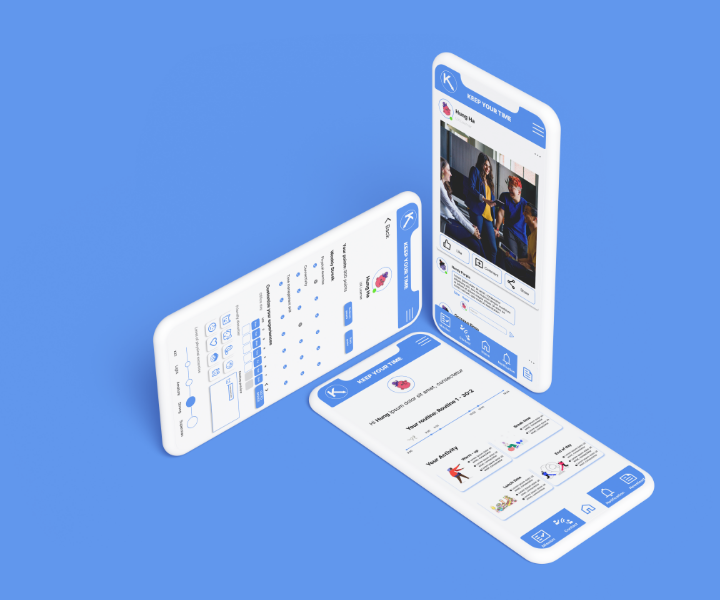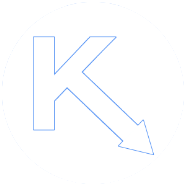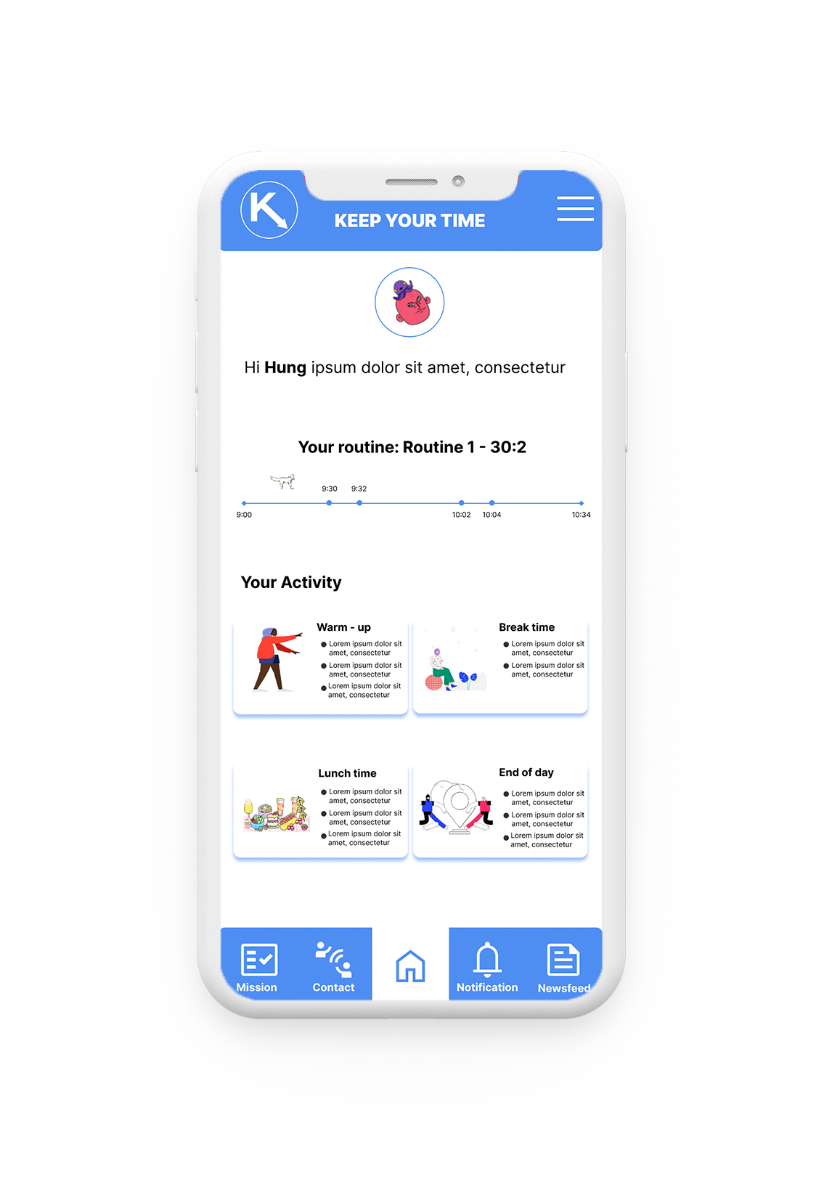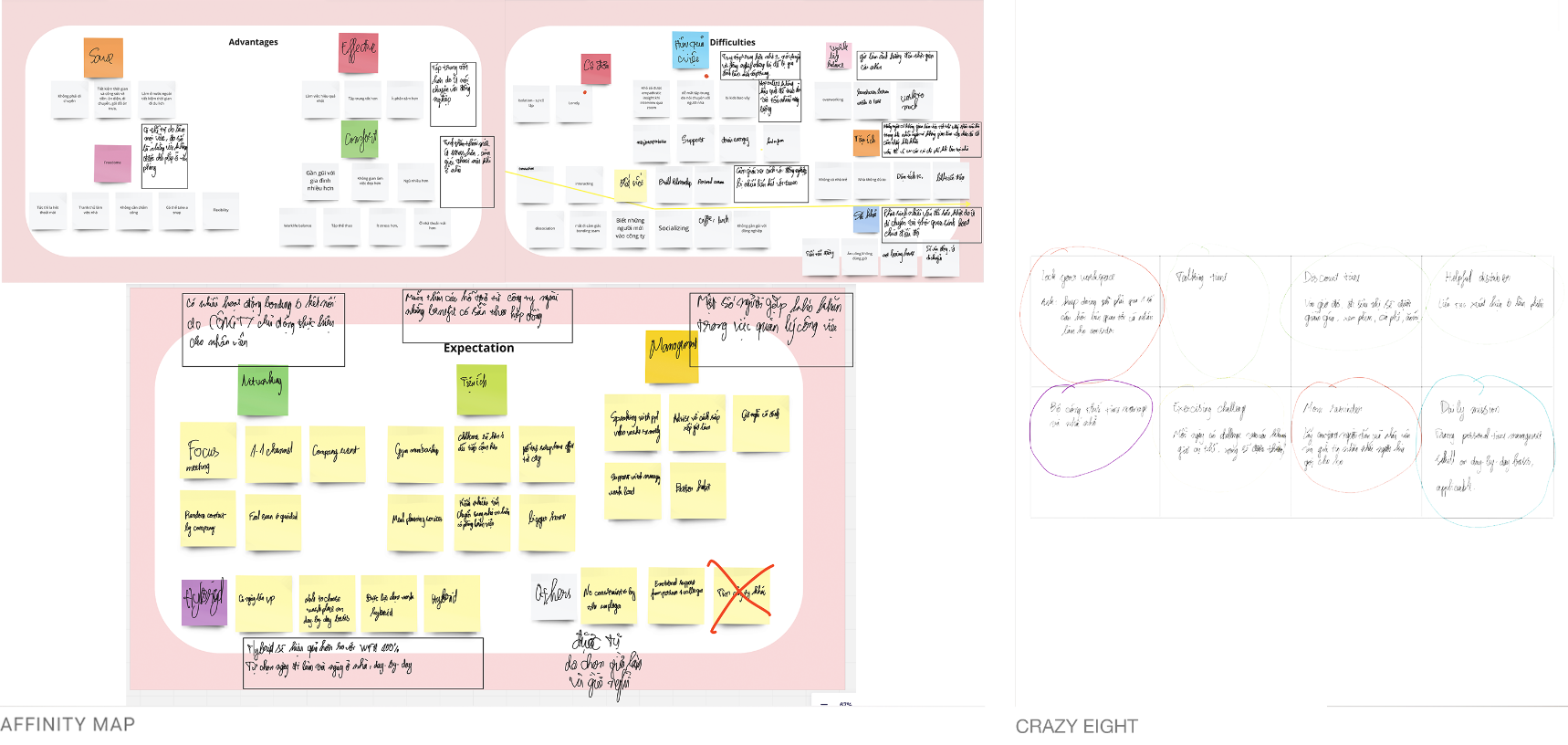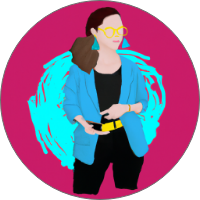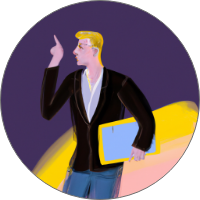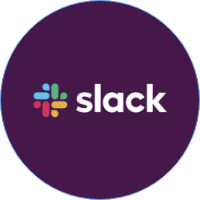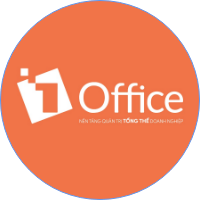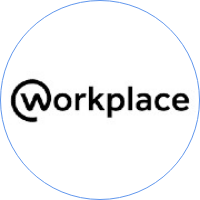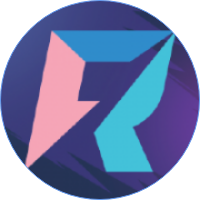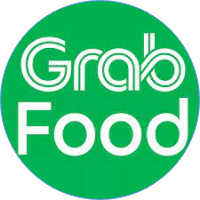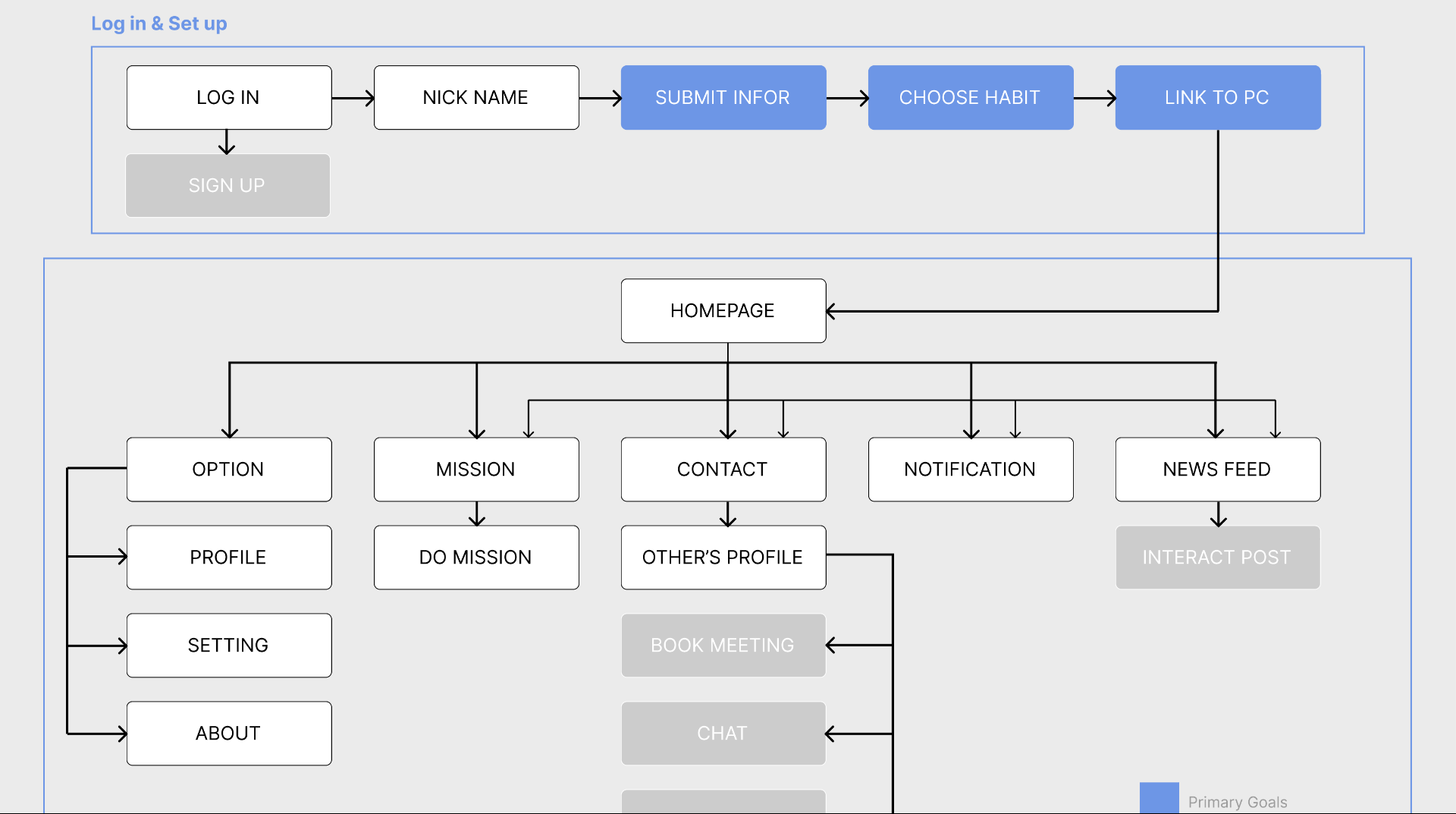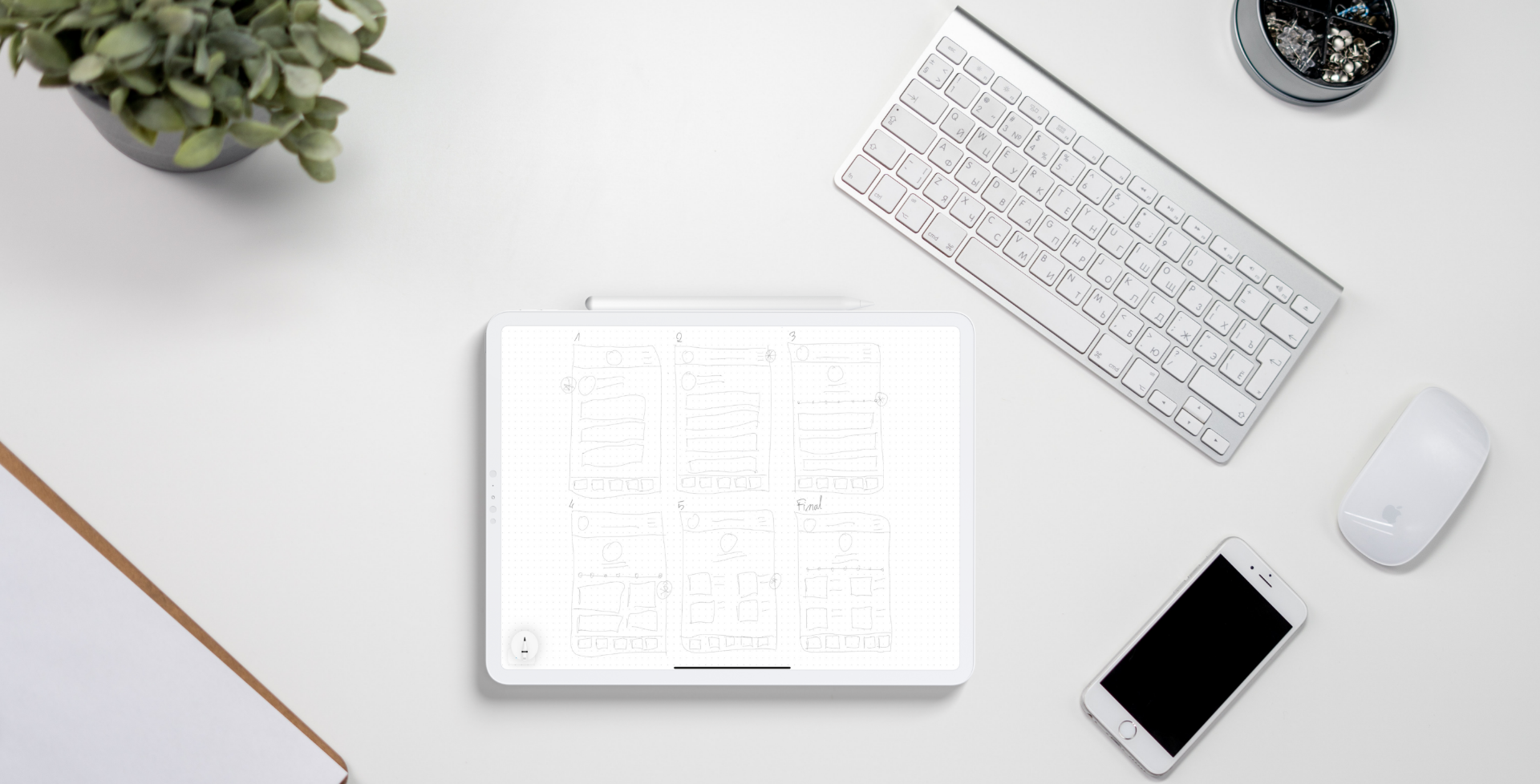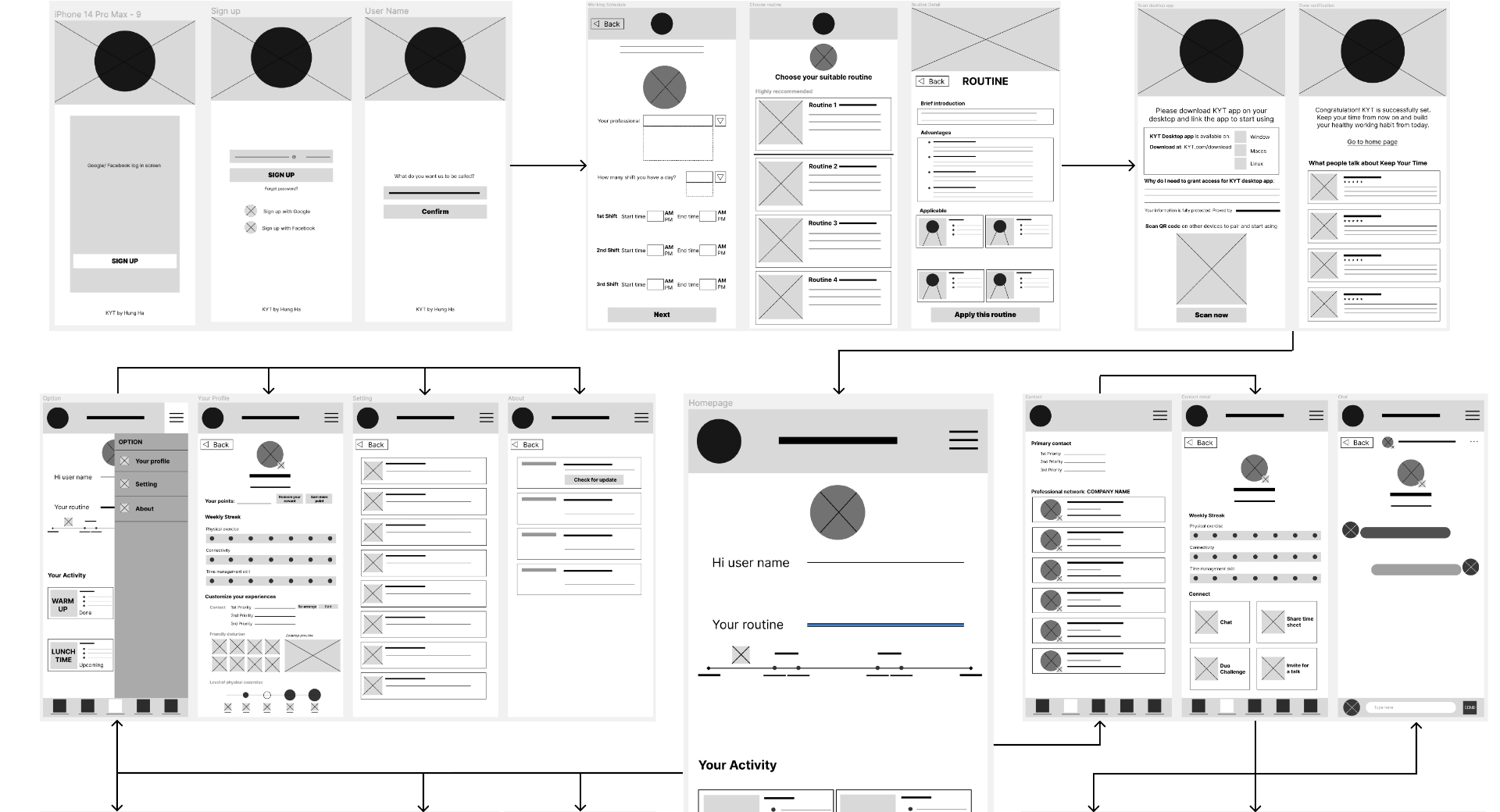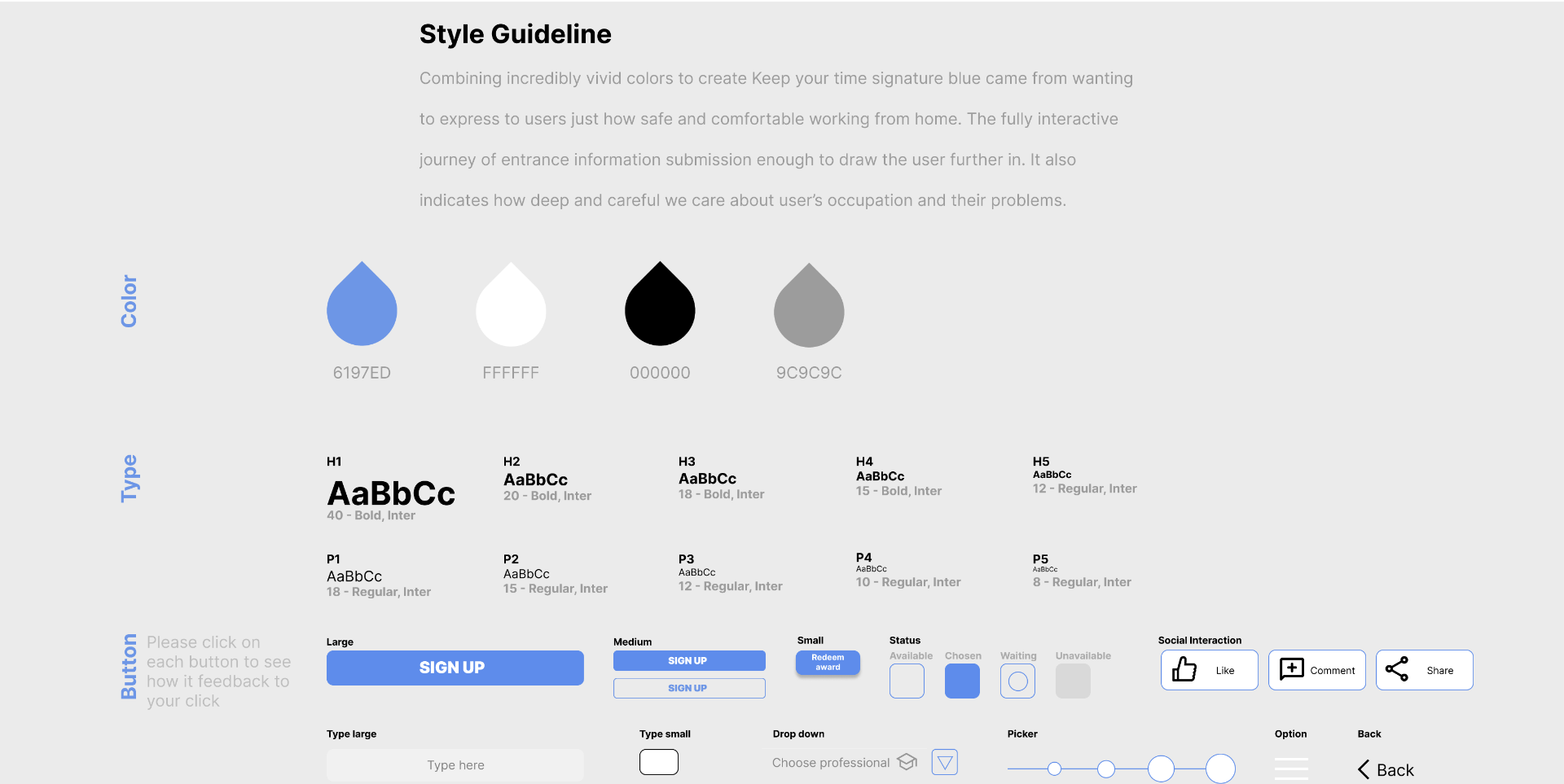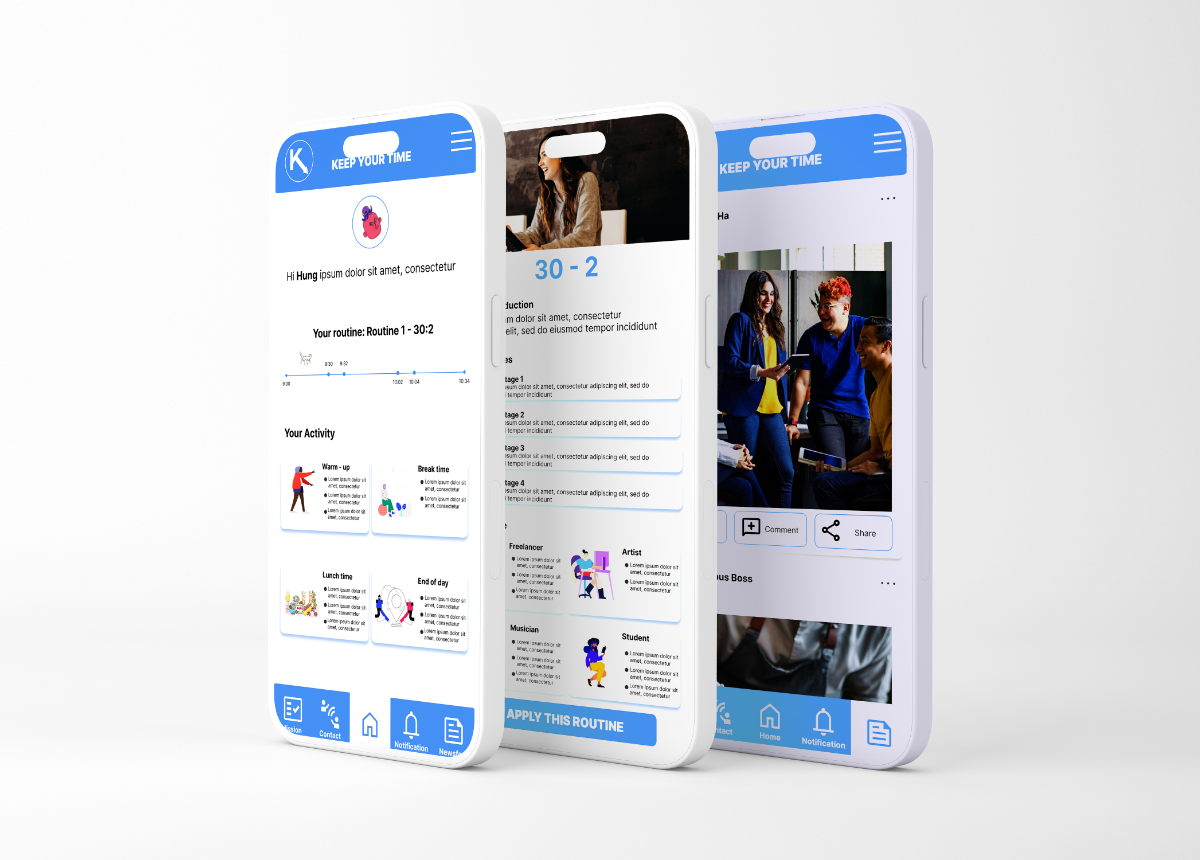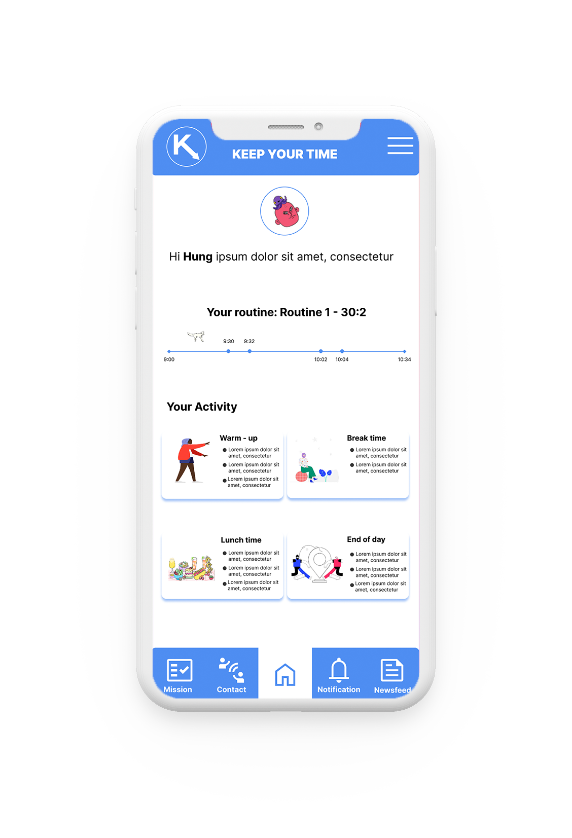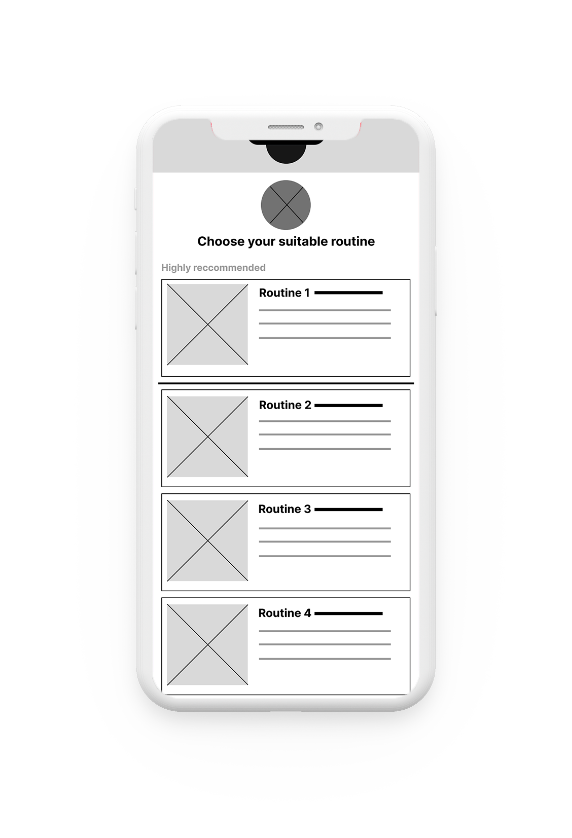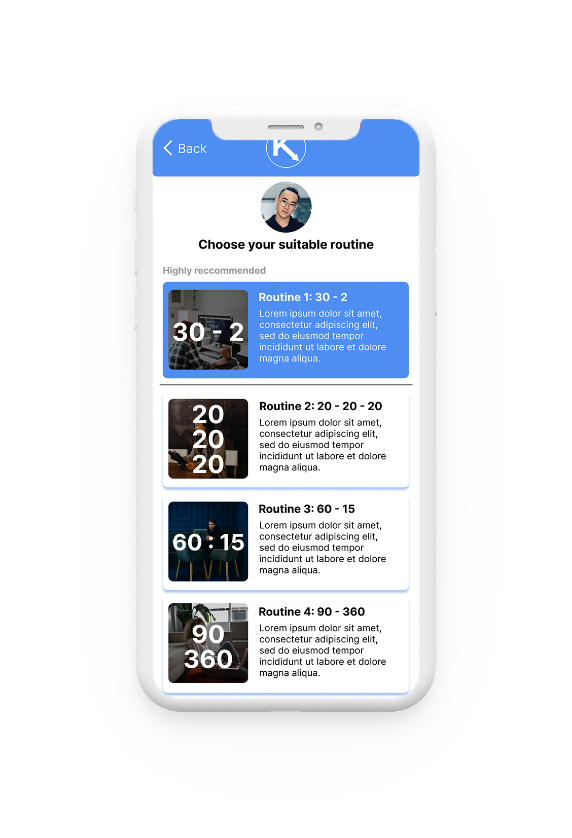
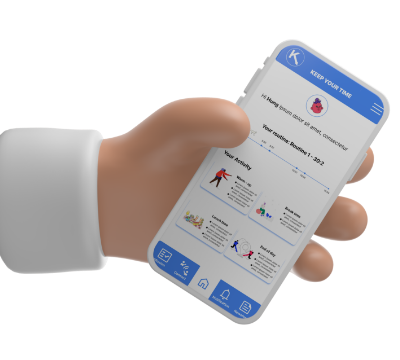
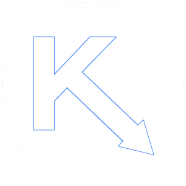
KEEP YOUR TIME APP
Your time is your
Your time is your
PROJECT: Keep Your Time Mobile link to Desktop app
ROLE: UX Design, Interaction, Visual
DURATION: 5 Dec 2022 (3 weeks)
Project Vision
Keep your time is a supportive application for officer who is working from home. As work from home, people suffers in many side of professional life, major in communication/ connection, work-life balance, physical health and time management. All of these lead to health issues, physically and mentally. We help them overcome all of these problems.
Keep your time is a supportive application for officer who is working from home. As work from home, people suffers in many side of professional life, major in communication/ connection, work-life balance, physical health and time management. All of these lead to health issues, physically and mentally. We help them overcome all of these problems.
Challenge
1) Eliminate barrier to entry on application startup
2) Design a cohesive interface for familiar and unfamilar users
3) Create a minimalistic UI while keeping products as the focus
4) Provide full support for any user’s pain points.
1) Eliminate barrier to entry on application startup
2) Design a cohesive interface for familiar and unfamilar users
3) Create a minimalistic UI while keeping products as the focus
4) Provide full support for any user’s pain points.
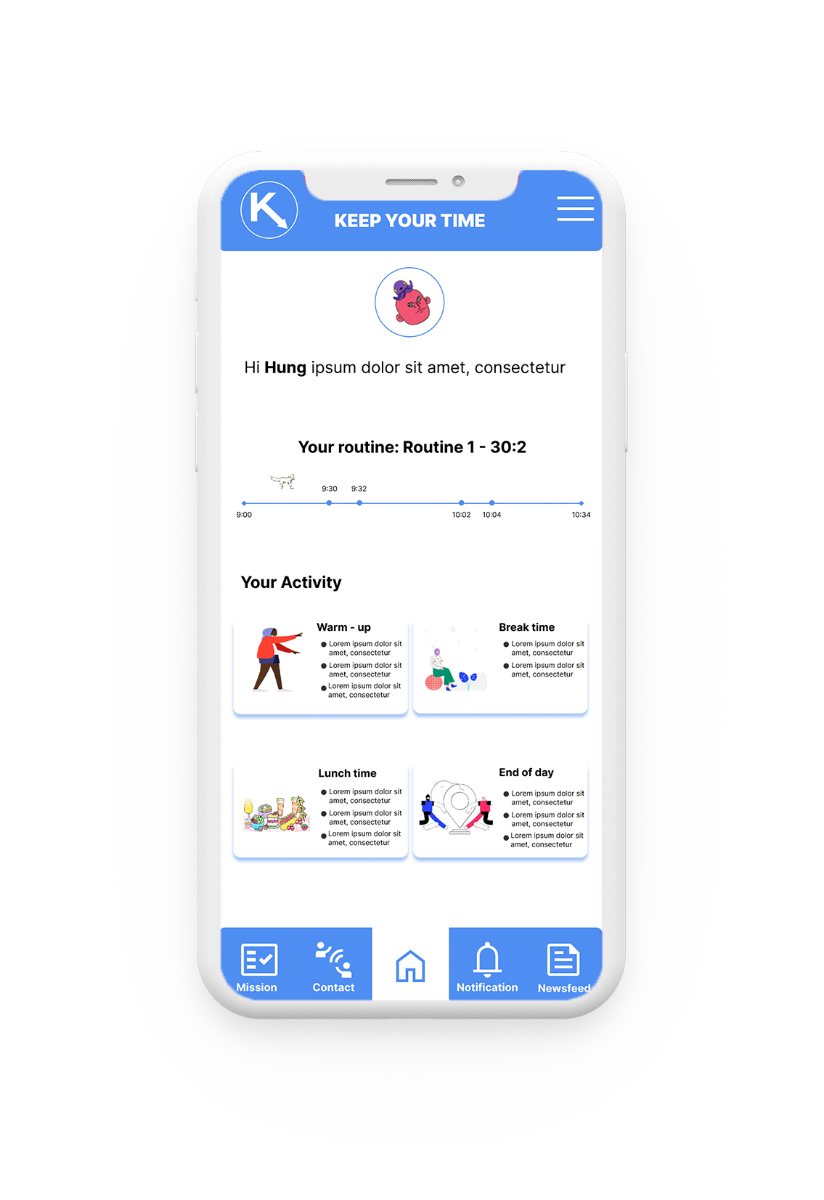
Kickoff
In this project, I took a user-centered design approach that proved to be quite effective in our design efforts. I found qualitative research methods to be the most useful, consisting of a kickoff direction, competitive analysis, and most important our persona hypothesis construction. I started out by understanding some initial key questions.
In this project, I took a user-centered design approach that proved to be quite effective in our design efforts. I found qualitative research methods to be the most useful, consisting of a kickoff direction, competitive analysis, and most important our persona hypothesis construction. I started out by understanding some initial key questions.
I found data from a pre-conducted interview from CareerFoundry to be the most effective understandings users. I then used an affinity diagram to separate the data into groups of tasks which were further categorized by high level goals for improvement in efficiency, process, depth, and familiarity. Recognizing the conflicts of interest from each audience allowed us to focus on shaping user goals and how those goals would in-turn also affect the business’ goals.
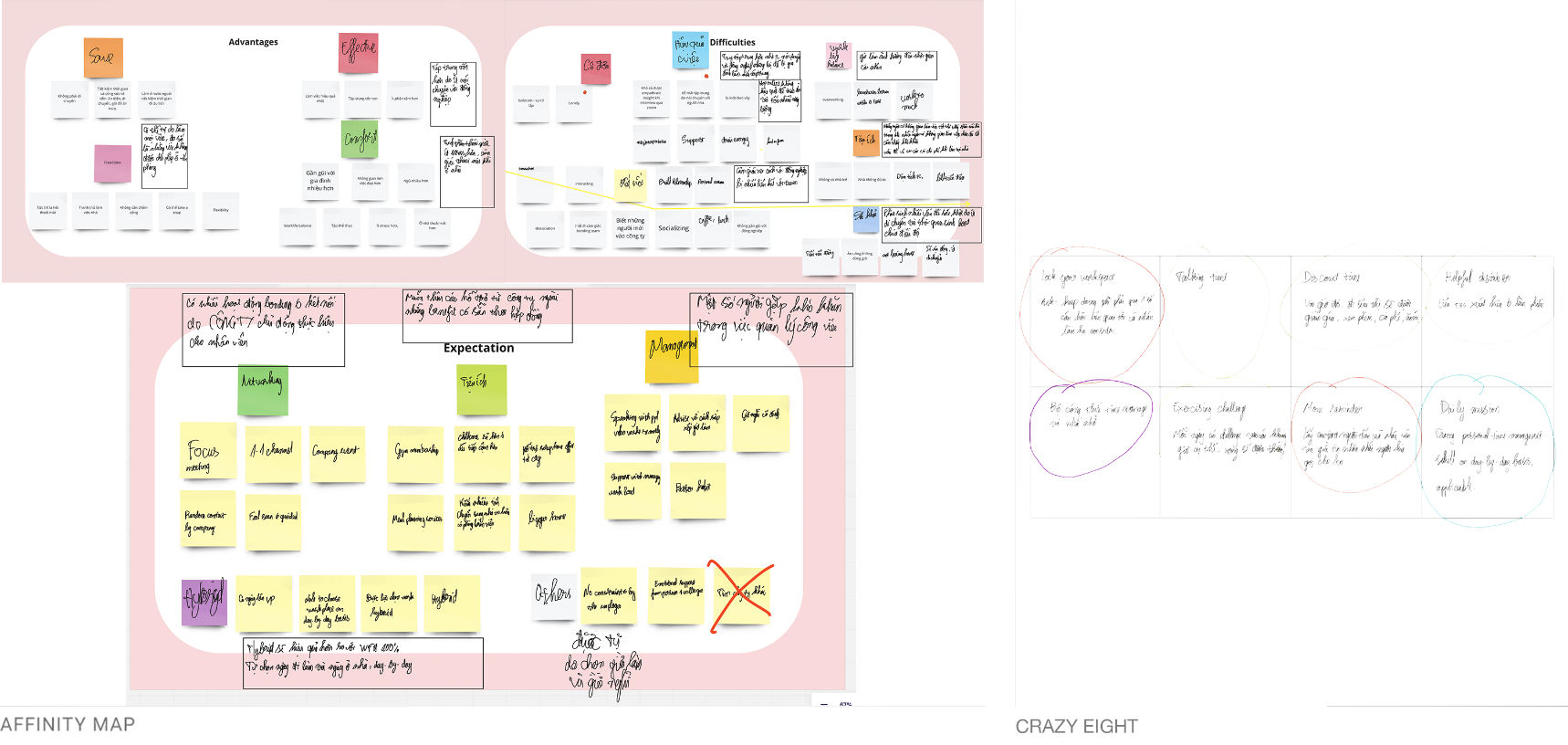
Meet our user
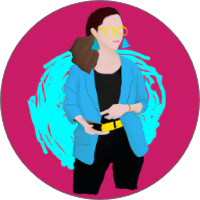
Primary
Name: Julien
Age: 26
Occupation: Creative manager - Marketing
Name: Julien
Age: 26
Occupation: Creative manager - Marketing
Julien is really passionate in her job. She enjoy working from home which can save her time of commuting and she can have more time with her cats. Her passion makes Julien overworking all the time when she works from home because she has her working corner right on her bed. She is looking for a solution that can prevent her from overworking and build a work-life balance habit.
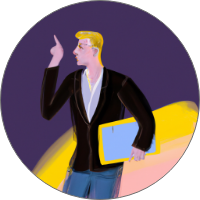
Secondary
Name: Harry
Age: 36
Occupation: Founder of Julien’s company
Name: Harry
Age: 36
Occupation: Founder of Julien’s company
Working in the field of communication with a rushed workload and high requirement of creativity, Harry wish his employees keep their good health condition, both physical and mental. Moreover, due to the lacking of talents in the field, Harry needs to try his best keep employees feel good and be loyal with the company, reduce the leave rate at the lowest rate By offering other benefits but salary.
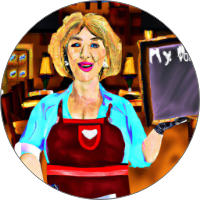
Supplementary
Name: Luna
Age: 46
Occupation: Private restaurant owner
Name: Luna
Age: 46
Occupation: Private restaurant owner
Luna is an experienced chef, especially cooking healthy dishes because she is really into these dishes herself. Her foods are good but she is not dynamic enough to take advantage in the competition with other young restaurant owners on modern food delivery applications. She tries to find some other platform which is less competitive.
Competitive Analysis
We looked at several potential competing companies, and there are some compete directly with Keep Your Time, they can infringe on the business’ revenue & popularity. Keep Your Time has the opportunity to capitalize on this by bringing fully support to build new healthy working habit on daily reminder and inspiration.
The majority of the features between competitiors were not really similar, however the main differences that we noticed were:
– Lacking of some functions vs full functions
– Too Many Screens vs Simplified Interaction
– Bright / Distracting Interface vs Minimalistic Interface
– General vs Customizable experiences
We looked at several potential competing companies, and there are some compete directly with Keep Your Time, they can infringe on the business’ revenue & popularity. Keep Your Time has the opportunity to capitalize on this by bringing fully support to build new healthy working habit on daily reminder and inspiration.
The majority of the features between competitiors were not really similar, however the main differences that we noticed were:
– Lacking of some functions vs full functions
– Too Many Screens vs Simplified Interaction
– Bright / Distracting Interface vs Minimalistic Interface
– General vs Customizable experiences
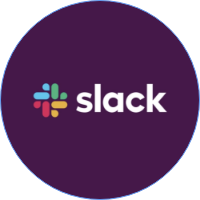
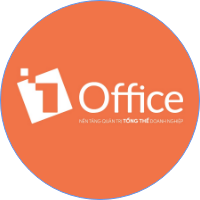
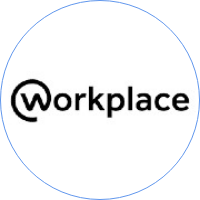
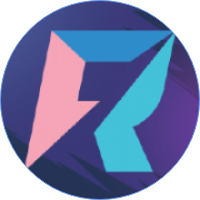
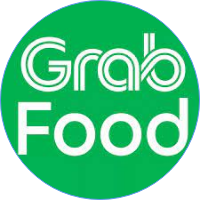
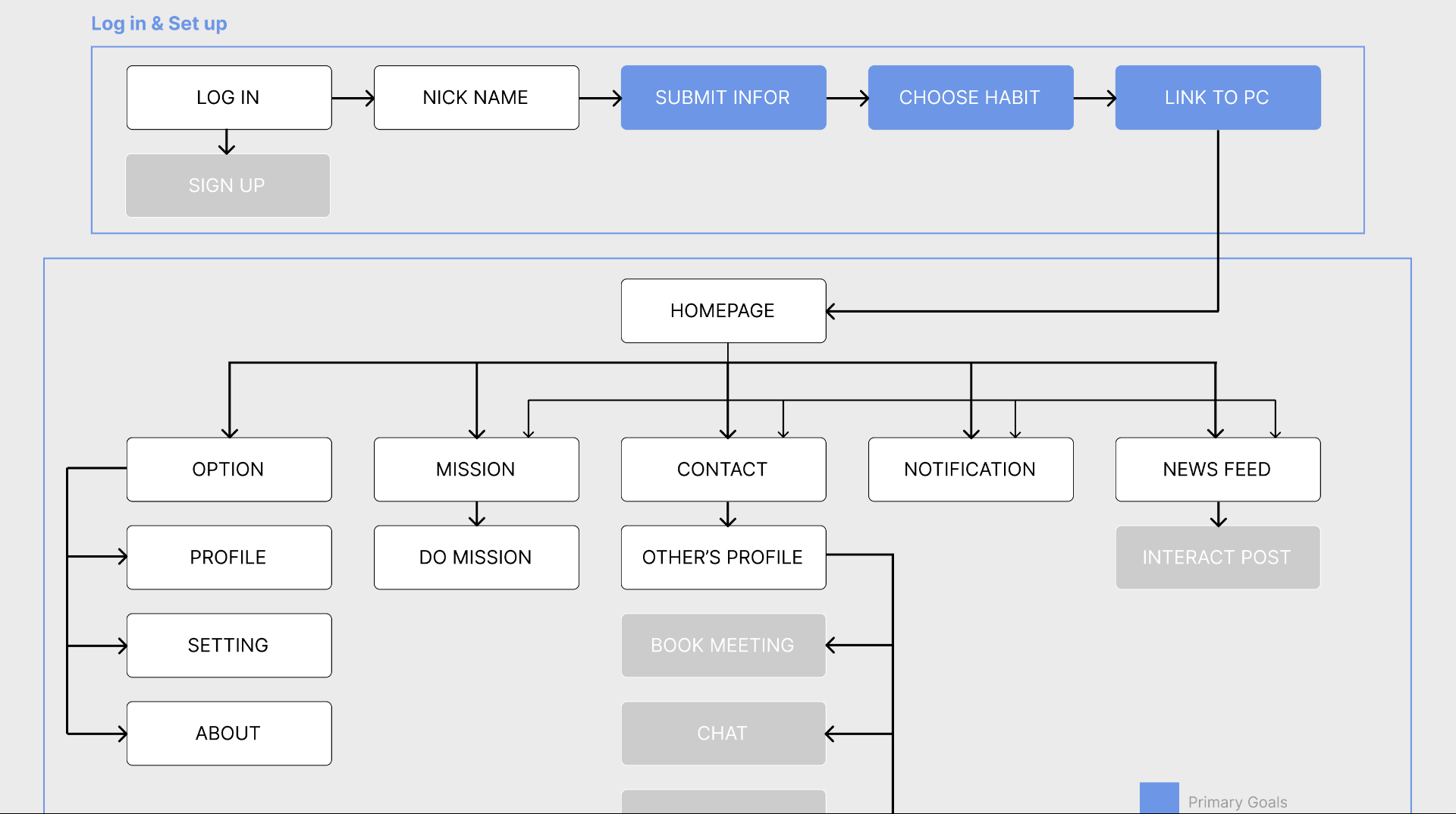

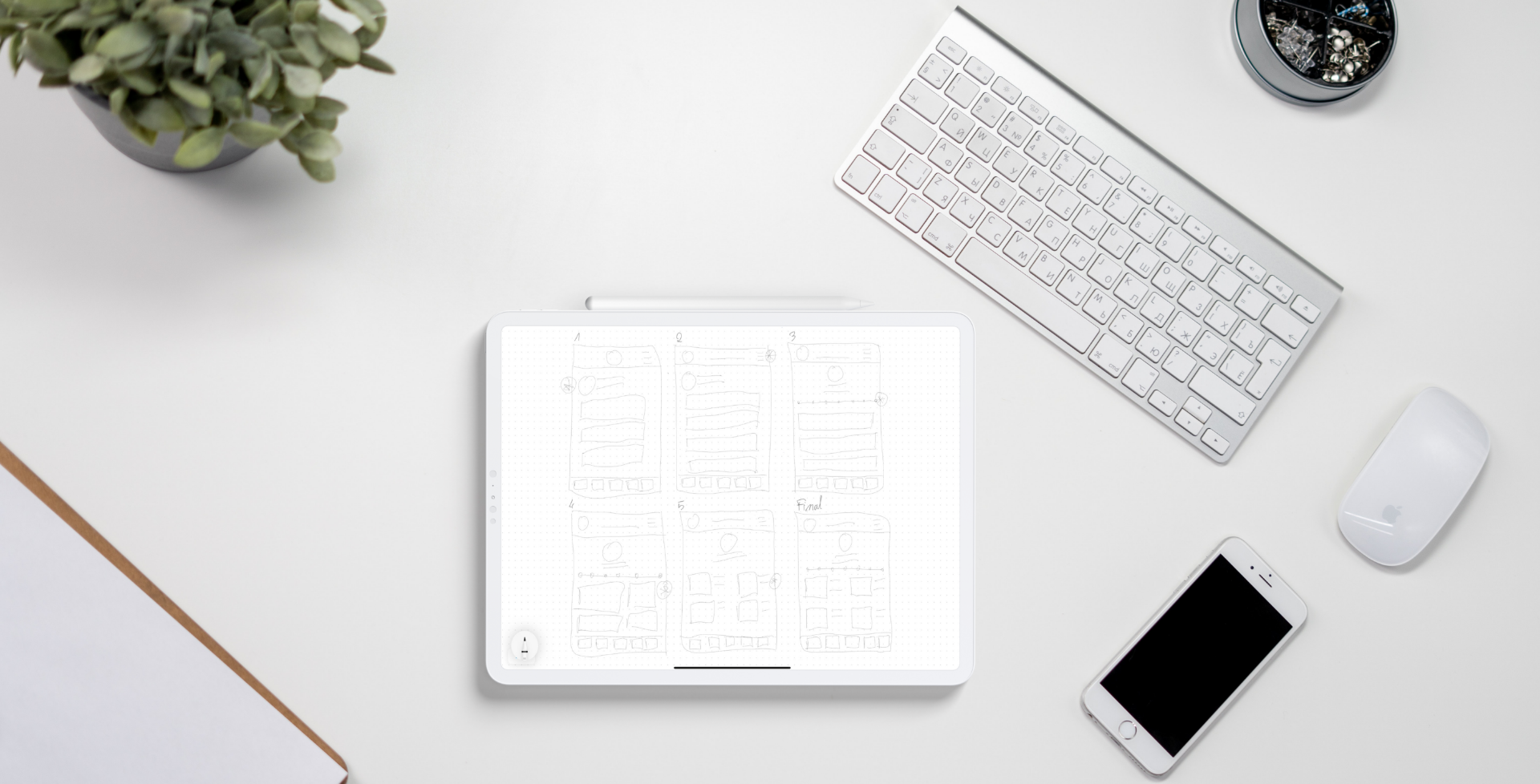
Preparing the Journey
I constructed the 1st user flow of what a basic start to finish journey choosing a new suitable healthy working habit to build. Then we have a full set of functions that help users do everything they need in 1 app of Keep Your Time - it also save there time and reduce distraction moving between apps.
I constructed the 1st user flow of what a basic start to finish journey choosing a new suitable healthy working habit to build. Then we have a full set of functions that help users do everything they need in 1 app of Keep Your Time - it also save there time and reduce distraction moving between apps.
Wireflow
After sketching out some p&p wireframes and thinking through the preliminary flow, I reviewed what was necessary, unnecessary, and what areas needed improvement. I poured a lot of our time into this step to make sure we had the finishing touches on the underlying UX before moving onto the visuals.
After sketching out some p&p wireframes and thinking through the preliminary flow, I reviewed what was necessary, unnecessary, and what areas needed improvement. I poured a lot of our time into this step to make sure we had the finishing touches on the underlying UX before moving onto the visuals.


Iteration
After creating my prototype from low fidelity wireframes, I prepared a survey for participants to fill out before I began conducting a usability test. We asked 5 different participants to run through different scenarios in our prototype in hopes of garnering enough feedback to use for our next set of design iterations.
After creating my prototype from low fidelity wireframes, I prepared a survey for participants to fill out before I began conducting a usability test. We asked 5 different participants to run through different scenarios in our prototype in hopes of garnering enough feedback to use for our next set of design iterations.
CHALLENGE 1
Habit Suggestion
It’s very difficult for people to choose a working behavior which (may)be suitable for them at first. That may cause a high drop-off rate at the very soon stage of the app. Therefore, we can analyze user’s occupation and working schedule then suggest them the most suitable habit. We also use best supportive interaction to help them provide information in the fastest way.
Habit Suggestion
It’s very difficult for people to choose a working behavior which (may)be suitable for them at first. That may cause a high drop-off rate at the very soon stage of the app. Therefore, we can analyze user’s occupation and working schedule then suggest them the most suitable habit. We also use best supportive interaction to help them provide information in the fastest way.
CHALLENGE 2
Desktop access for desktop app
After submitting a lot of personal information, it’s really sensitive when Keep Your Time desktop app ask people for access on their computer. This is also a source of high drop-off rate. Therefore, we need to tell people why do we need access on their PC (for notification, pop-up, lock screen…). In order to be more trustworthy, we invite a third-party who is responsible for information safety for Keep Your Time’s users.
Desktop access for desktop app
After submitting a lot of personal information, it’s really sensitive when Keep Your Time desktop app ask people for access on their computer. This is also a source of high drop-off rate. Therefore, we need to tell people why do we need access on their PC (for notification, pop-up, lock screen…). In order to be more trustworthy, we invite a third-party who is responsible for information safety for Keep Your Time’s users.
CHALLENGE 3
Physical health issues
The key to success when you build a habit is practicing continuously. We help users in real time by keep reminding them following the healthy working habit and give them motivation, such as deals for on time meals (time limited deals), gift vouchers for physical/mental health activities when users successfully complete a steak of daily mission for a week.
Physical health issues
The key to success when you build a habit is practicing continuously. We help users in real time by keep reminding them following the healthy working habit and give them motivation, such as deals for on time meals (time limited deals), gift vouchers for physical/mental health activities when users successfully complete a steak of daily mission for a week.
CHALLENGE 4
Self-customized experienced
No experience is suitable for all. We enable users to decide which experiences is most suitable for them. Hybrid work is also a wish of working-from-home employee. We let them choose which day do they want to go to the office. After the consideration, if HR or office manager see the available conditions, users can go to the office some day.
Self-customized experienced
No experience is suitable for all. We enable users to decide which experiences is most suitable for them. Hybrid work is also a wish of working-from-home employee. We let them choose which day do they want to go to the office. After the consideration, if HR or office manager see the available conditions, users can go to the office some day.
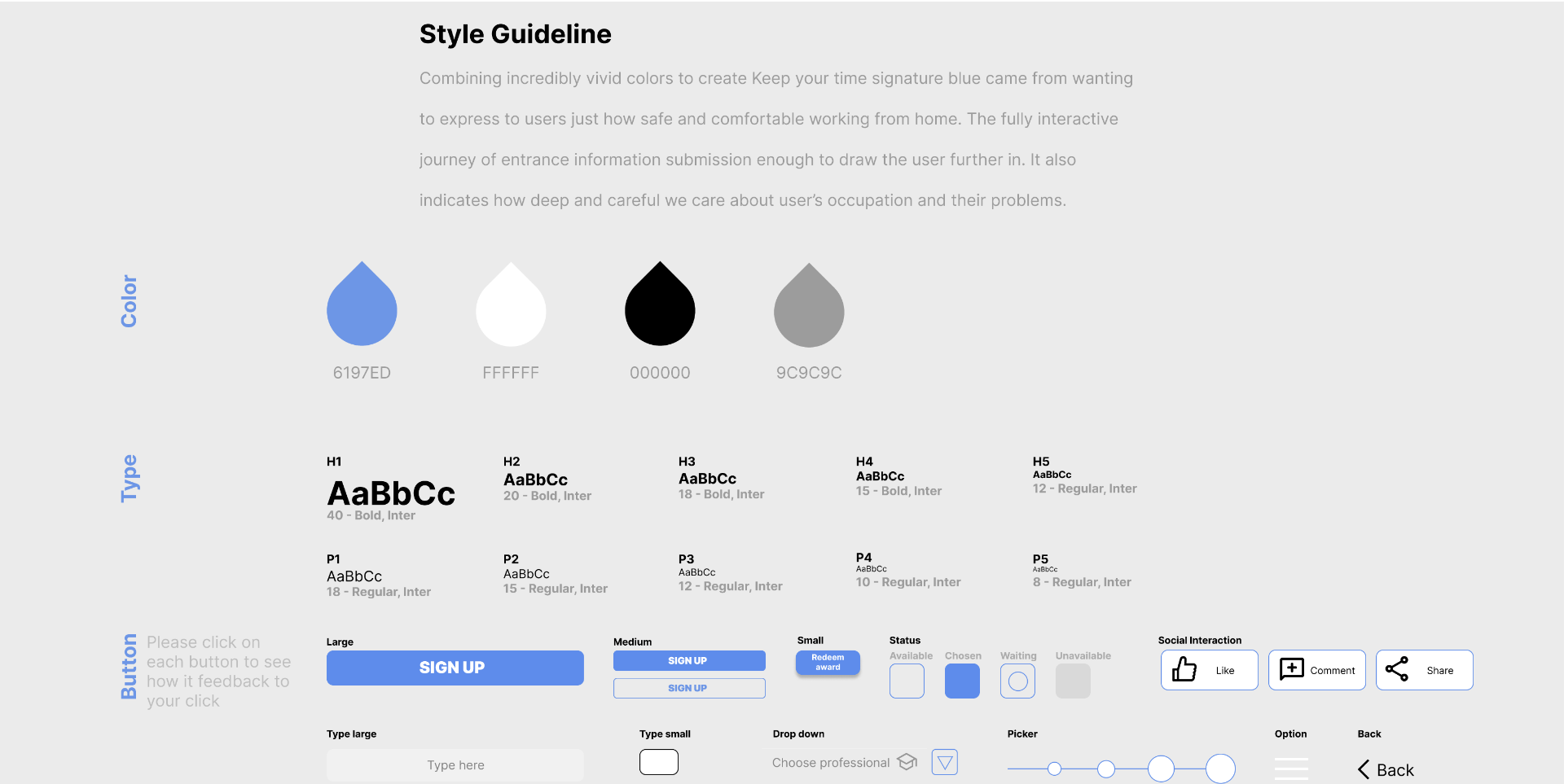

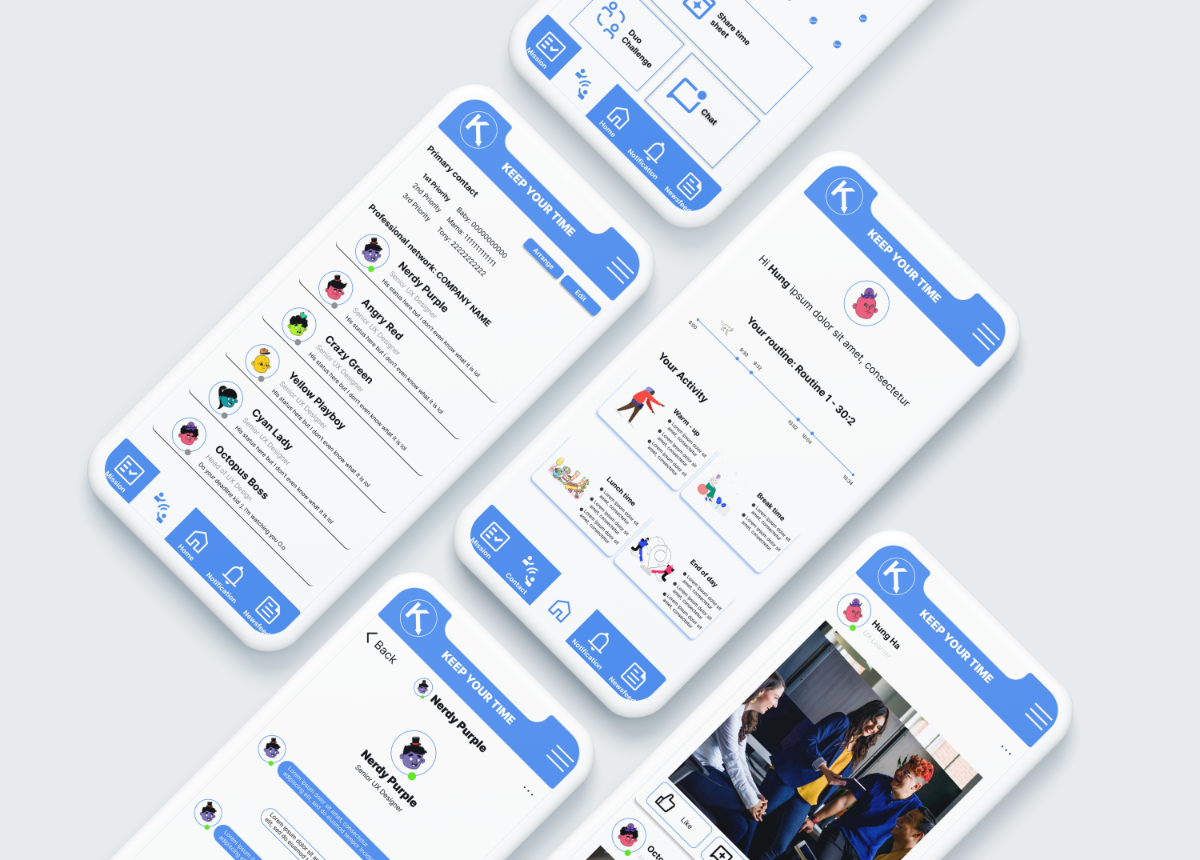

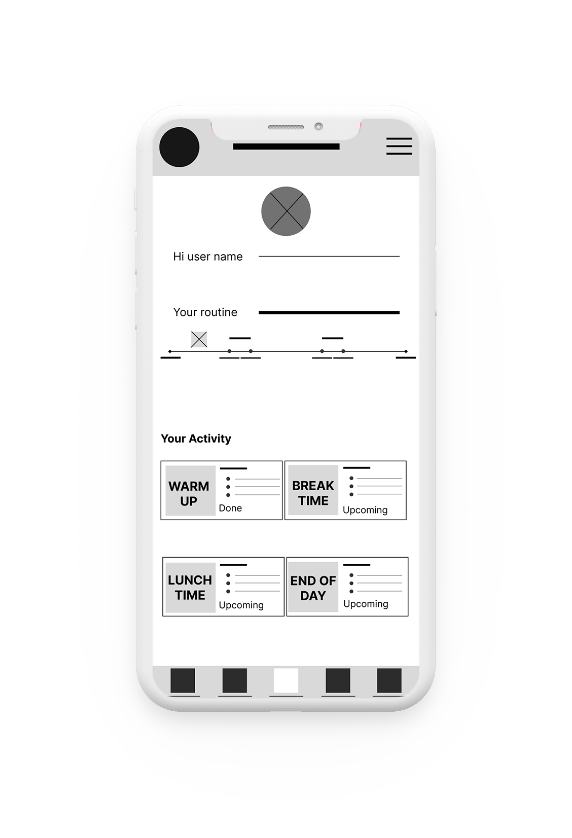

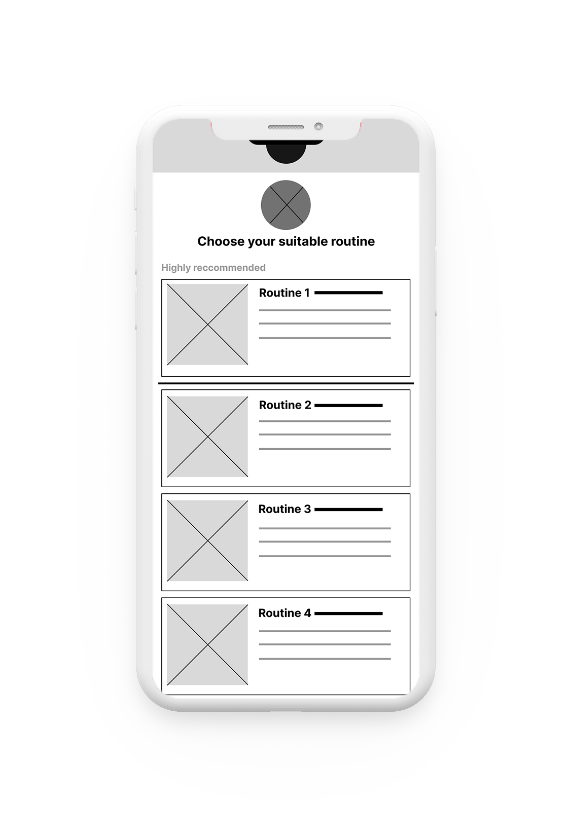
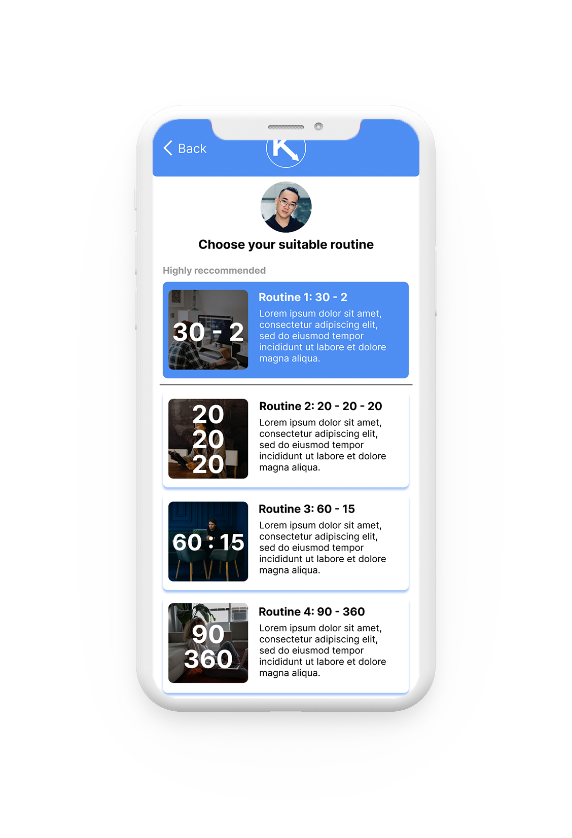
DEMO APP
DEMO APP
DEMO APP
DEMO APP
Take away
As the husband of a workaholic (Julien is my wife), I can strongly feel the usefulness and urgency of Keep Your Time app. I wanted to communicate the importance protecting your health while working from home. This was my first time using the user-centered design process , and I can definitely see it being useful in future projects. The idea of honing in on the persona hypothesis creation to help further the needs of not only the user, but the business is a step that I had taken for granted up until now. I learned that if you design for exclusively the business’ goals, it will most likely fail; this seems to be especially true in office apps.
As the husband of a workaholic (Julien is my wife), I can strongly feel the usefulness and urgency of Keep Your Time app. I wanted to communicate the importance protecting your health while working from home. This was my first time using the user-centered design process , and I can definitely see it being useful in future projects. The idea of honing in on the persona hypothesis creation to help further the needs of not only the user, but the business is a step that I had taken for granted up until now. I learned that if you design for exclusively the business’ goals, it will most likely fail; this seems to be especially true in office apps.
Problem 1
We found that most users who were signing up the first time had a worry about their own information security because of some personal information submission and desktop access.
We found that most users who were signing up the first time had a worry about their own information security because of some personal information submission and desktop access.
Problem 2
Another thing was that it’s kinda annoying while we offer users many options with tons of information and do not offer users any suggestion.
Another thing was that it’s kinda annoying while we offer users many options with tons of information and do not offer users any suggestion.
Problem 3
Anybody has their own physical health condition and there is no general habit which can fit all. People cannot see how to customize a habit for their own.
Anybody has their own physical health condition and there is no general habit which can fit all. People cannot see how to customize a habit for their own.
Problem 4
Building a new habit is difficult and boring. And people are getting even more boring while they cannot choose their favorite visual elements in the app.
Building a new habit is difficult and boring. And people are getting even more boring while they cannot choose their favorite visual elements in the app.
“What is the product and who is it for?”
How easy/challenging people feel from working remotely?
What are advantages of working remotely?
What are disadvantages of working remotely?
What things people wish to change/ be supported?
“Who do we see as our biggest competitors?”
Interested in working together? I’d love to hear from you.
LINKEDIN
HUNGHA.CREATIVE@GMAIL.COM
Hung Ha (Meditiger)
